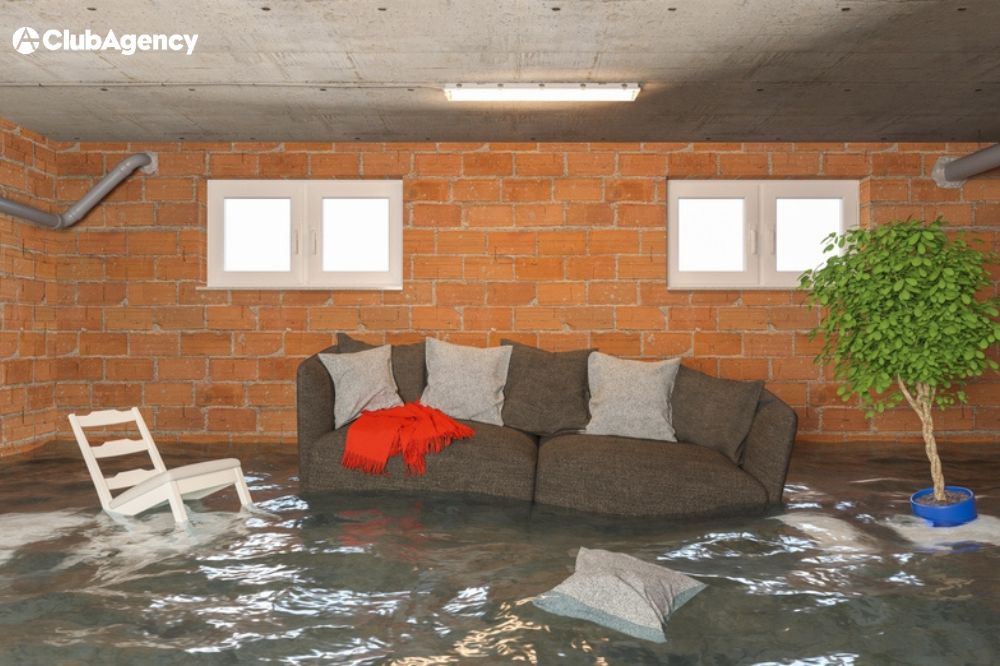

At RMS and associated firms, business continues as usual. Our staff is remote-capable and available to handle all partners, brokers, and insureds at the present time.
Contact us today!
Executive Order for Policyholder Payments


Flooding is now one of the most serious threats facing American homeowners, but how much will it actually cost to protect your property from this rising risk? Understanding the real price of flood insurance, what influences your premiums, and how you can find the right coverage is key to protecting your family and finances. Here’s your comprehensive 2025 guide from Club Agency Insurance Brokerage.
Flood insurance is more important than ever, as standard homeowners insurance almost never covers flood damage. According to the latest figures, the national average cost of flood insurance through the National Flood Insurance Program (NFIP) is about $898–$899 per year, that’s roughly $75 per month. Some private insurers offer policies starting slightly lower, but costs can climb substantially based on your situation.
Premiums fluctuate between $800 and $3,500 for a typical home depending on factors like your location, the property’s elevation, the amount of coverage, and recent changes in FEMA’s rating system.
Several critical factors affect the cost of your flood insurance:
Flood Zone Designation: Homes in high-risk areas (Zones A or V) pay higher rates, averaging over $1,000 per year, while those in low- to moderate-risk zones can see premiums as low as $691 annually.
State and Local Risk: Rates vary widely across states—from about $442 in Alaska to over $1,500 in Vermont.
Coverage Level: The standard NFIP policy protects up to $250,000 for a building and $100,000 for contents. For more coverage, private insurers can offer higher limits—but usually for a higher price.
Type of Property: Single-family homes, condos, townhomes, and rental properties all have different pricing structures.
Elevation and Age: Homes built above base flood elevation or newer constructions often pay less.
Due to ongoing climate change and updated FEMA flood risk maps, many homeowners are seeing increases of up to 18% per year for several years as the NFIP recalibrates risk more precisely. While federal policies remain the most common choice, private flood insurance has become more competitive, sometimes offering better rates or expanded endorsements for coverage gaps that the NFIP doesn’t handle.
With the rising frequency of severe weather, the cost of not having flood insurance can be catastrophic—a single inch of water can cause more than $25,000 in damage. Even if you live outside “high-risk” flood zones, about one-third of all flood claims come from moderate-to-low-risk areas. Many lenders require flood insurance in high-risk areas, but it’s strongly recommended for anyone in or near mapped floodplains.
Get an Elevation Certificate: This document can sometimes lower your rate, especially in high-risk zones.
Mitigation Efforts: Installing flood vents, relocating utilities above base flood elevation, or using water-resistant materials may qualify you for discounts.
Find the Best: Private insurers may sometimes beat NFIP rates or provide higher coverage for a modest increase.
Adjust Your Coverage Amount: Insure only what you need to replace, not the full market value, if appropriate.
Flood insurance is only required if your home is in a high-risk flood zone (SFHA) and you have a federally backed mortgage, but it’s wise for anyone near flood-prone areas.
Standard homeowners or renters insurance policies do not cover flood damage.
Raising your deductible, retrofitting your home for resilience, and obtaining an elevation certificate may reduce your rates.
Yes, both NFIP and private insurers offer coverage in low- to moderate-risk zones, sometimes at much lower rates.
Don’t wait for the next storm, let Club Agency Insurance Brokerage find the right flood policy for you at a competitive price. Our expert agents understand the evolving risks facing Northeast homeowners and how to ensure you’re protected, whatever the weather brings.
Contact us today for a free, personalized flood insurance quote and coverage review. Protect your mental safety and your most valuable asset your home.
Sources: Bankrate, NerdWallet, CNBC, Flood Insurance Guru, FEMA.